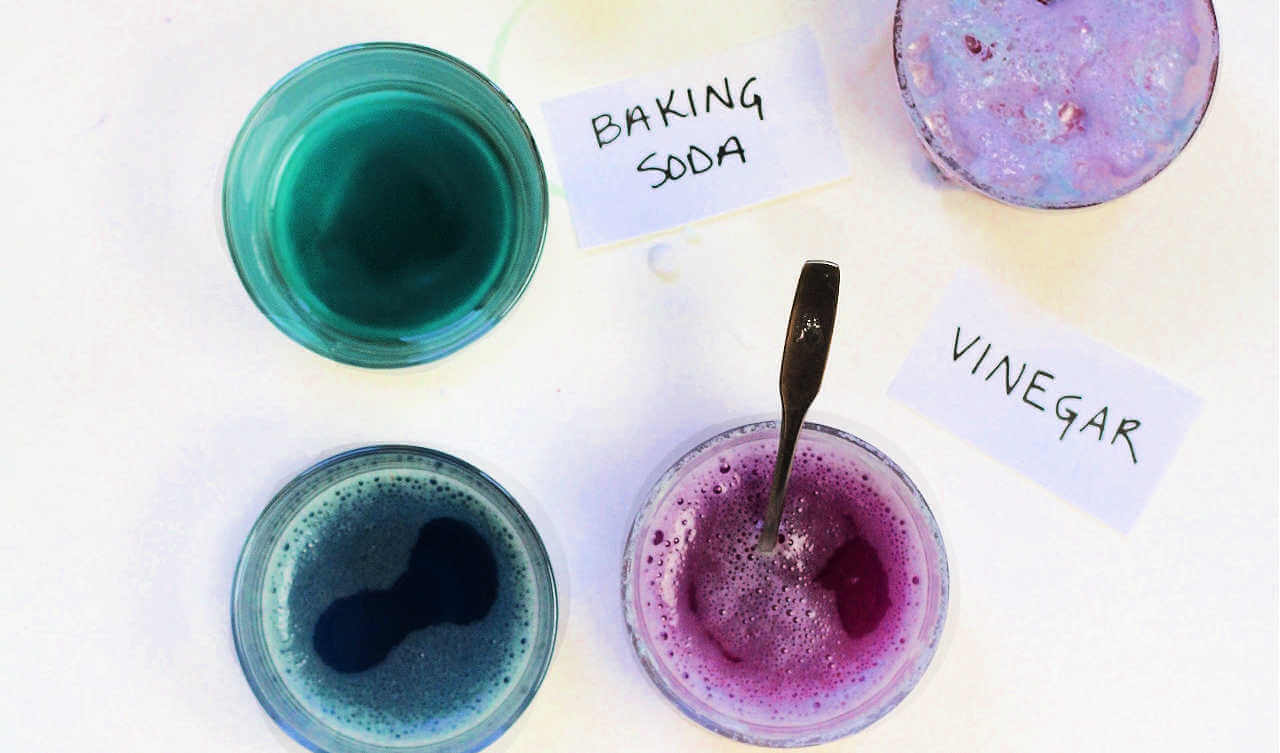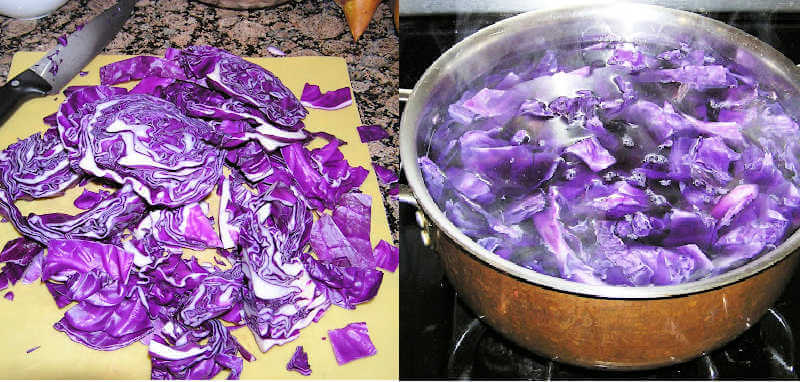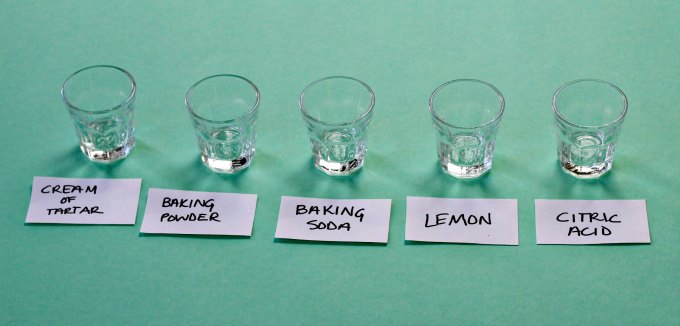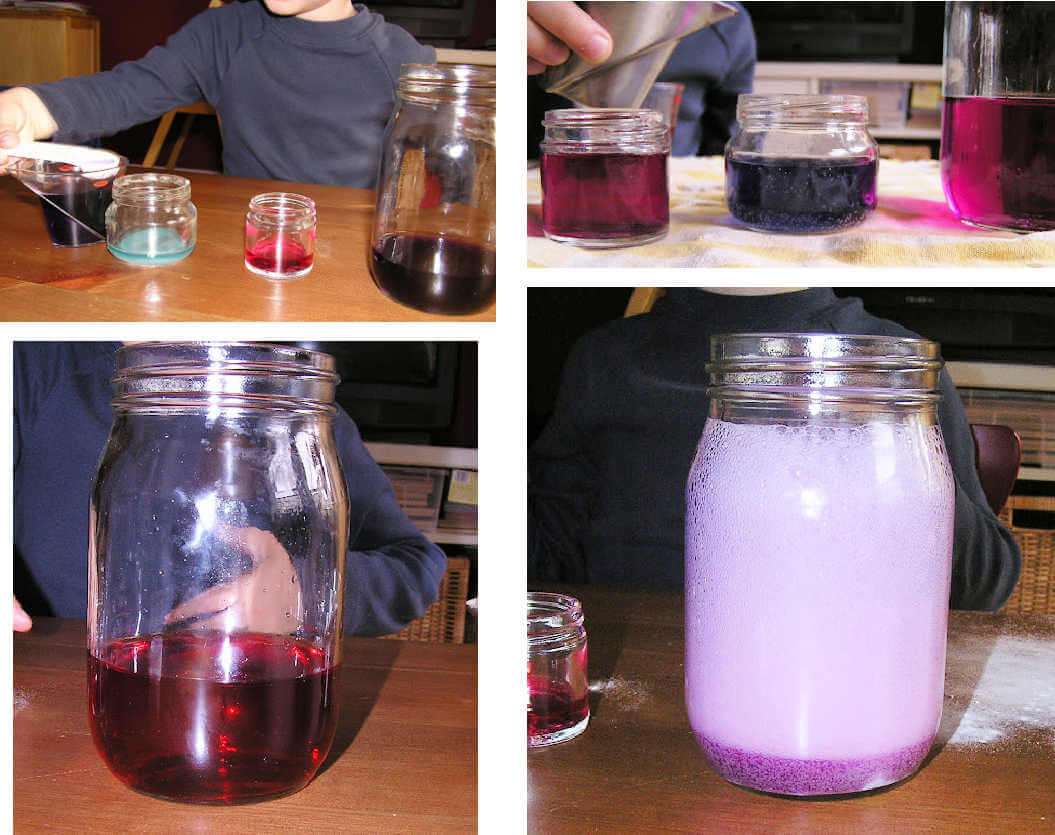As you know, we love at home science experiments. When you're up for a great science experiment with a big wow factor, this acid-base science experiment using a cabbage juice indicator is fun, colorful and seems quite magical.
It's the perfect opportunity for older kids who to learn about the scientific method and it's great for younger kids who are still simply exploring the wonders of science.

What you need
Cabbage juice (instructions below)
Household powders and liquids such as:
- baking soda (base) (be sure to save some for the exploding car wash)
- cream of tartar (acid)
- vinegar (acid)
- lemon juice (acid)
- citric acid (acid)
- dish soap (base)
Cups, bowls and spoons - enough for each ingredient and several extras for the cabbage juice
Paper and pen for labeling or to record observations
MORE: Blowing up a balloon with chemistry science project
How to make the cabbage juice
Chop up a red cabbage. Add the chopped cabbage and enough water to cover it to a large pot. There are many ways kids can help in the kitchen, but chopping and boiling cabbage requires an adult. Allow to simmer about 20 minutes.

Strain out the cabbage. Set for cooking (if you think boiled cabbage is tasty) or add it to the compost pile.
Allow the cabbage juice, which is now a bright purple color, to cool completely.

Cabbage Juice Experiment Instructions
While the cabbage juice is cooling, prep your work area.
Preparation and Set-Up
Arrange your empty cups or bowls on a table or other protected surface. Write the name of each household item on a label and place next to each cup. Place a small amount of the corresponding powder or liquid into each cup.
Decant the cabbage juice into a liquid measuring cup or jar for easy pouring and fill a number of cups half full with the purple liquid.
MORE: Top 10 After-School Science Experiments
Mix the Materials
Now comes the fun part!

Mix your chosen ingredients into the separate containers of cabbage juice and watch what happens!
Kids will observe that the different combinations provide a range of results, depending on whether you are adding a base or an acid to the cabbage juice. Sometimes the liquid will turn pinker, other times it will stay purple or head towards blue or green.
After the initial mixing of each base or acid to the cabbage juice, my kids started to engage in a free for all. Suddenly, when they added baking soda to the vinegar-juice combo the color changed again, and it started fizzing! They thought it was great fun (as you will see if you watch the video, below) to start mixing and matching however they saw fit. That's the magic of science!
MORE: Learn about Liquid Density with a Salt Volcano
The Science Behind the Experiment
Cabbage juice is a ph indicator that changes color according to the acidity of the substance added to it. Red cabbage contains anthocyanin, a water-soluble pigment that changes color depending on the substance added to it.
The more acidic the substance, the pinker it gets. The less acidic, the closer to yellow the juice gets. A neutral ph will appear blue.

Tips
Tip #1. It's perfectly reasonable to want to approach this science experiment in a methodical manner, meticulously recording results and observations. That's great for a classroom or homeschool lesson.
For us, this experiment was an after-school science exploration and my kids didn't want to do the recording part, which was fine for our purposes. Sometimes learning about science is just having fun with no further obligations.
Tip #2 Some ingredients will fizz when combined. Let it happen, set it up somewhere where kids can experiment without worrying about mess.
Just like with our simple kids science lab, you should let the kids explore the scientific reactions however they want. Please supervise closely if using any harsh ingredients.




Leave a Reply